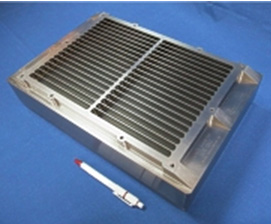Oxford Instruments' MAXI X-ray detectors will be part of the launch to the International Space Station on 13th June 2009. X-ray detectors, developed by Oxford Instruments in Finland, will be installed on the International Space Station as part of the Japanese MAXI instrument. More sensitive than previous X-ray instruments, MAXI will deliver new valuable information on distant energetic X-ray objects and increase knowledge about the evolution of the Universe. MAXI is an acronym for Monitor of All-sky X-ray Image.

The development and fabrication of the MAXI X-ray detectors has been very demanding and is a landmark achievement for Oxford Instruments. Design of the detector started in 1997 and the last units were delivered to the Japan Aerospace Exploration Agency JAXA in 2004.
12 detectors will be installed on the Japanese Exposed Facility outside the International Space Station.
MAXI detectors are sealed multiwire proportional counters with an extremely large sensing area. The size of one detector is 36 cm x 24 cm x 9 cm and the weight is 5.5 kg and they are made of titanium for maximum strength and light weight.
The detectors will monitor the whole of space as the Space Station orbits the Earth. The MAXI instrument will create a dynamic map of all X-ray sources, the most interesting objects being active galactic nuclei and giant black holes. It will also observe sudden gamma-ray bursts, which usually die out fast, and send an alert to astronomers. Most of the measurement data are transmitted in real time and will be accessible to astronomers via the internet within minutes.